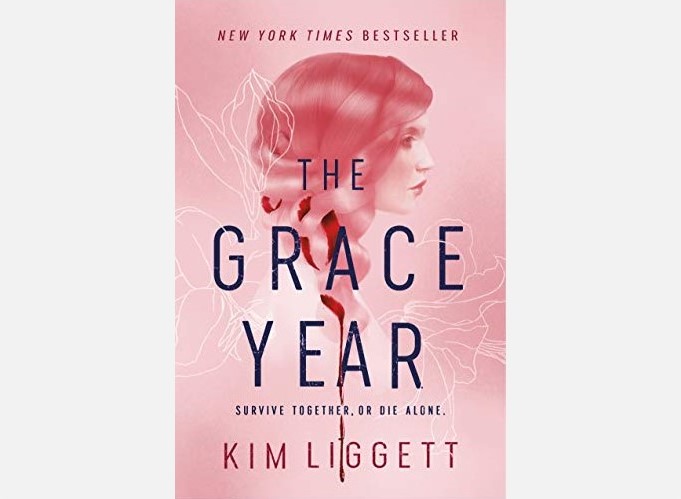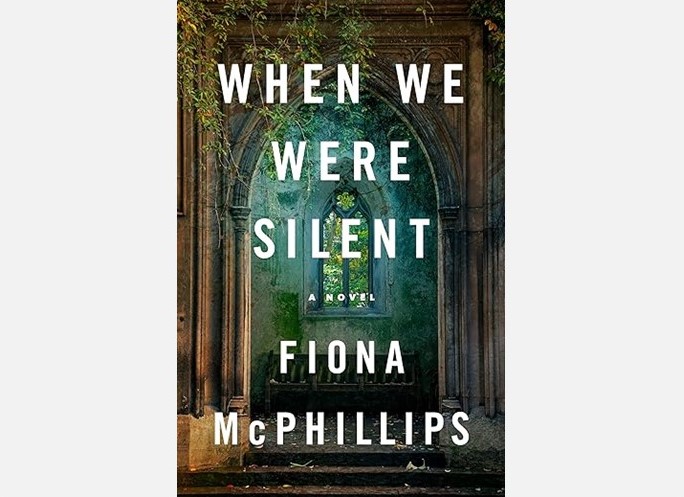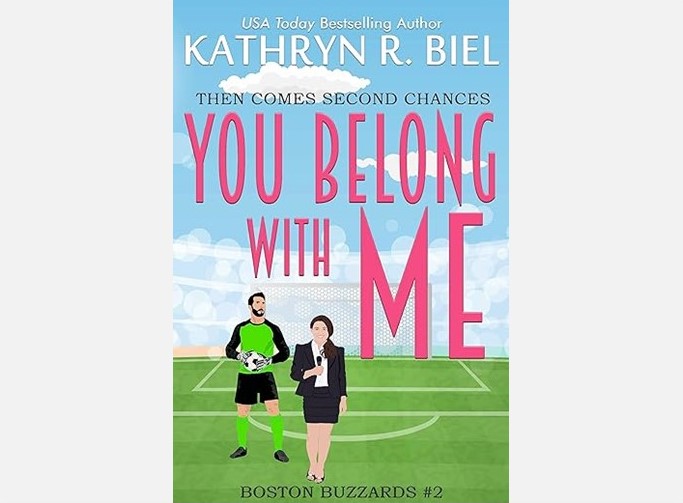Story for the Week
Put 30 teenage girls in a room together for 24 hours, and you’re sure to end up with countless TikTok and Snapchat videos. Heck, put just two teenage girls together for a few hours, and you’ll have at least half a dozen. Put 30 20-something women in a mansion together for month, and you have The Bachelor, which we all know just becomes mean girls dating.
But what if you put 30 teenage girls together without technology—no phones, no televisions, no internet? Sure, they might start out having fun, telling stories, making up goofy games. But what if they had to fend for themselves for a week? (Think Survivor on steroids with teenagers.) How long would it take for them to become mean girls and turn on each other?
I asked Corinne how long she would last with 29 other girls without technology, and she said, “Oh yeah, I’d be ready to kill someone in a couple of days.” 🤣
I am old enough to remember a time without the internet, without cell phones. (Yes, I’m really that old.) When I was Corinne’s age, and even younger, I went pretty regularly to Girl Scout camp. We always loved staying in the lodges with indoor plumbing, but we also slept in sleeping bags in tents. We woke up with spiders on the walls, cooked meals over a fire, had latrine duty, told stories while we toasted marshmallows for s’mores, learned crazy camping songs that my strange brain still remembers. If we had do go to the bathroom in the middle of the night, we needed a flashlight to find the outhouse without tripping over tree roots on the path. My dad and brother went to Boy Scout survival camp, which was even more primitive. They had to dig holes for latrines and bury their 💩. 😯
Do I think Corinne would survive the Girl Scout camping of my childhood? Sure. I mean, we weren’t exactly roughing it and living off the land. It was called Camp Merrybrook, for crying out loud, so definitely not Survivor. Would she enjoy it and want to go back? 🤣🤣🤣🤣🤣🤣🤣🤣🤣🤣🤣🤣🤣🤣🤣🤣 Absolutely not. 😉
All of that said, I never spent a month at Girl Scout camp. Our leaders oversaw everything. We arrived stocked with supplies. We had a schedule for each day, assigned roles, specific activities planned. But what if…?
What if it was only teenage girls with no direction, no supplies, no assignments? We could probably muddle our way through for a weekend. It might get a little dicey by the end of a week. A month? I think I’m with Corinne about being ready to kill someone.
A year? 🤷♀️☠
I just finished a book recommended by one of Corinne’s friends where more than 30 16-year-old girls had to fend for themselves for a year…by design. It was interesting, to say the least. Add this one to your list.
Book Review
⭐⭐⭐⭐½
4.5 Stars for The Grace Year by Kim Liggett
409 pages
Publisher: Wednesday Books
Publication Date: October 8, 2019
Purchased on Amazon
Publisher’s Description
No one speaks of the grace year. It’s forbidden.
In Garner County, girls are told they have the power to lure grown men from their beds, to drive women mad with jealousy. They believe their very skin emits a powerful aphrodisiac, the potent essence of youth, of a girl on the edge of womanhood. That’s why they’re banished for their sixteenth year, to release their magic into the wild so they can return purified and ready for marriage. But not all of them will make it home alive.
Sixteen-year-old Tierney James dreams of a better life—a society that doesn’t pit friend against friend or woman against woman, but as her own grace year draws near, she quickly realizes that it’s not just the brutal elements they must fear. It’s not even the poachers in the woods, men who are waiting for a chance to grab one of the girls in order to make a fortune on the black market. Their greatest threat may very well be each other.
************
Main Characters:
- Tierney – a physician’s daughter, she is the third of five. Her father has taught her how to survive in the woods before her grace year. She does not want to become a married woman but would rather work in the fields.
- Kiersten – considers herself in charge, intends to return from the grace year to marry the apothecary’s son Michael, who is expected to take over as head of the council.
- Gertie – a bit of an outcast, has been punished for being “dirty Gertie,” used to be close friends with Kiersten.
I saw a lot of reviews that describe this as being dystopian fiction, which I guess it is by precise definition. But when I think of dystopian fiction, I think of stories set in the future where something apocalyptic destroyed society as we know it. I felt like this is more medieval. I kept thinking about an offshoot game of The Sims called The Sims Medieval where there are chambermaids and servants and carrier pigeons. The physician heals people with roots and leeches, and characters use different herbs and flowers as medicinal cures. Flowers themselves hold symbolism about forgiveness, death, rebirth, etc. People walk everywhere.
This book tells the story of Tierney and all the other 16-year-old girls in Garner County. Women are subservient here. They face punishment by hanging or burning for things like dreaming and impurity. One woman was hanged for shouting obscenities in her sleep, making her husband eligible to remarry…to a young girl. (Feels a little suspicious if you ask me.) Wives who don’t give birth to boys, or to any children at all, can be banished to “the outskirts.”
At 16, girls receive veils if they are selected to be married by one of the eligible men. After the veiling ceremony, all the girls (veiled and unveiled) are transported on foot and then by boat to an island where they spend their “grace year” in a guarded encampment. It is believed that they each have magic that is released during the grace year so they can return to the county purified and ready for marriage.
If the girls stray from the path or leave the encampment, they face the danger of poachers, who kill and skin them for money on the black market. If a girl’s body is not recovered, her (typically younger) sisters are banished. Since not all the grace year girls return, those who leave without veils still have a chance to receive a veil after the grace year since all eligible men choose a wife. The most valued women receive veils and return from their grace year to be married and give birth to boys. Any girls born are raised with the expectation that they will repeat the same cycle of the grace year that their mothers experience before them. Sounds pretty medieval to me.
When Tierney faces her grace year, she is certainly ahead of her time. She doesn’t want to be married. Her father has taught her how to survive. She understands the curative power of roots and the meanings of flowers. Thirty-three girls are part of Tierney’s grace year, and once the girls are safely enclosed in the encampment, Tierney tries to convince them that they can survive the year if they work together. This is really where the story begins, so I won’t spoil it here.
I didn’t want to stop reading. The book is divided into the seasons of the year. Tierney tells the story in short chapters, which makes for a quick pace that’s easy to get caught up in. This story feels like it could be any combination of Lord of the Flies, Hunger Games, Maze Runner, and even Survivor but in medieval times.
What knocked it down half a star for me was that we don’t have even an inkling of how the county became the way it is. In real life back in the day, women used to be considered property. We know this. Women were perceived to have special powers because menstrual cycles weren’t understood. We know this too. This is why the story feels more medieval than dystopian.
But what we don’t get in this story is how it came to be that a group of 16-year-old girls is sent off every year to fend for themselves. We are left to decide, I guess, whether this is past time or some horrific future that regresses to a time when women were believed to have no value beyond giving birth to boys. I saw an interview with the author where she said that “how did we get here?” is a lot less interesting than “what are we going to do now?” That’s a fair point, but even a little bit of context would have been nice.
Additionally, we don’t get any sort of epilogue to see what’s coming. Tierney dreamed of a different existence. At the end of the book, we know some sort of change is coming. We get a miniscule glimpse, but we really have no idea what it is. I have read that the author is working on a sequel, so we’ll see how that turns out at some later date (assuming I get around to reading the next one, which is hit or miss when I read the first in a series, depending on how long it takes for the second release).
Maybe it’s because I’m reading this as an adult. From what I’ve seen watching my daughter and her friends devour books, young adults are way more adept at dropping into the middle of a story. I saw a handful of low star ratings, and I suspect this could be why. I try to read young adult fiction with a young adult point of view, but it’s still going to have my adult bias in the background.
All in all, this is a worthwhile read and will more likely appeal to women…if you’re willing to push through the misogyny to get to the end. 😏
If you enjoyed this post, please comment below. Subscribe for regular updates, and share it with your friends. If you’re interested in starting a conversation, send an email to booksundertheblanket@gmail.com.
As an Amazon affiliate, I earn a small commission at no cost to you when you make a purchase using the links on my site.





